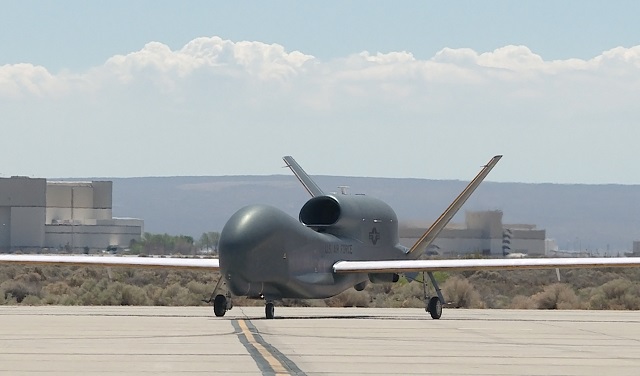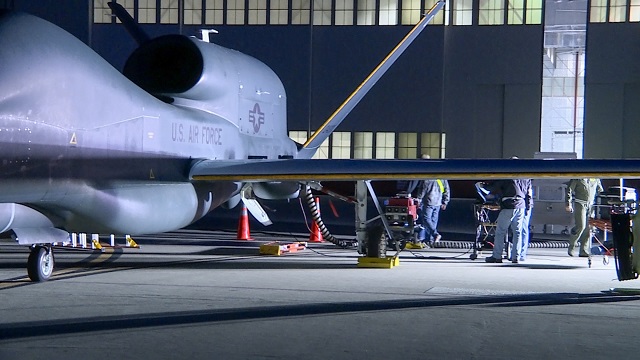Weapon testers at Edwards AFB in California have taken a unique approach to ice-shape testing of the remotely-piloted Northrop Grumman RQ-4B Global Hawk by laser printing simulated ice on the leading edges of the aircraft’s wings and V-tail to characterise buildup.
Like most aircraft, the Global Hawk is susceptible to icing on its leading edges when transiting through cloud decks from 8,000ft (2.4km) to 22,000ft, but to what level has never been fully characterised through formal flight testing. Now, the air force catching up as it prepares the late-1990s Global Hawk type to continue flying through to 2034, instead of moving it into early retirement.
The simulated ice was created using a process known as "selective laser sintering”, which is a form of additive manufacturing, in this case using nylon. It can also be performed with glass and metal.
“This was a first-of-type testing done here at Edwards. No other programme or combined test force (CTF) has accomplished icing testing in this manner,” says Global Vigilance CTF director Lt Col Cory Naddy in a recent air force news release. “We actually had the aircraft take off with the equivalent of light-time icing on the wings and tail – something that no other aircraft would normally do. From the moment we lifted off, we were operating in an envelope that was unproven and many risk factors were at play.”

Global Hawk with 3D-printed nylon on leading edges at Edwards AFB
US Air Force
Because the Global Hawk is mostly autonomous, missions might be aborted or diverted if uncertain icy weather conditions are detected. Now, operators will know the airframe's exact tolerance to ice buildup while carrying various fuel loads.
The aircraft typically fly at 60,000ft, which is well above the weather, but it can encounter icing while transiting through clouds. This has been problematic in the Pacific monsoon season, even forcing the aircraft to deploy to Misawa Air Base Japan to spy on China, North Korea and conduct other regional surveillance operations.
Since deciding to keep the unmanned aircraft that flies for more than 32h in favour of divesting the respected Lockheed Martin U-2 Dragon Lady, the air force is investing in ice shape testing, an engine inlet de-icing system and a weather radar for the RQ-4 fleet.

US Air Force
Source: FlightGlobal.com



















